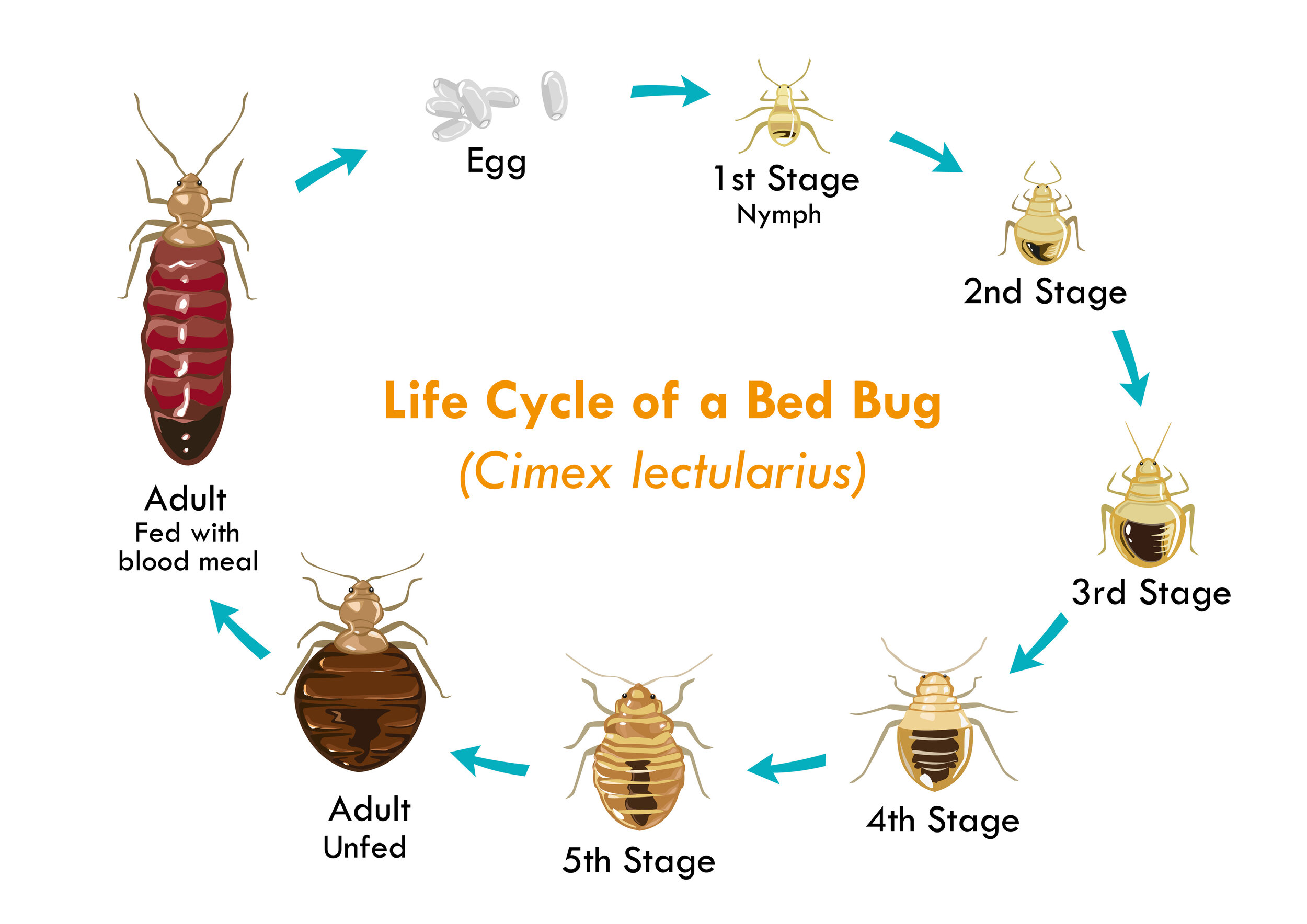Affordable A1 Bed Bug Removal in Houston - Professional Exterminators
Affordable A1 Bed Bug Removal in Houston - Professional Exterminators
Blog Article
Recognizing the Lifecycle of Parasites for Targeted Control Methods
Understanding the lifecycle of pests is an essential aspect of reliable insect monitoring techniques. Via a much deeper understanding of exactly how bugs develop and grow, customized control approaches can be developed to deal with specific points in their lifecycle, inevitably leading to even more effective parasite monitoring results.
Significance of Understanding Insect Lifecycle
Comprehending the lifecycle of insects is important for creating effective and targeted control techniques in bug management. By understanding the various stages a parasite experiences from egg to adult, pest control professionals can determine at risk points in the lifecycle where intervention can be most successful. For example, recognizing when larvae are most active can assist identify the ideal timing for using larvicides. Furthermore, recognizing the lifespan of a bug species can help in forecasting population development patterns and potential invasion dangers.
Furthermore, identifying the certain environmental conditions needed for each and every phase of the pest's lifecycle can lead decisions on environment modification or exclusion methods to lower and interrupt the lifecycle insect populations. This knowledge allows pest monitoring professionals to implement proactive steps rather than relying entirely on responsive therapies, causing even more sustainable and long-lasting parasite control solutions. Inevitably, a thorough understanding of insect lifecycles encourages bug control experts to tailor their methods effectively, minimizing environmental impacts and making best use of control results.
Key Stages in Parasite Development
To effectively apply targeted control techniques in pest management, a crucial aspect depends on thoroughly determining and understanding the essential stages in bug advancement. Pest development normally is composed of numerous key stages that are essential for their lifecycle and administration. The first stage is the egg stage, where bugs lay eggs that later hatch out right into larvae. Larvae after that progress right into pupae, a phase where they go through transformation prior to emerging as adult parasites. Comprehending these stages is important as it helps in determining weak spots in the lifecycle where control steps can be most effective.

Vulnerabilities in Insect Lifecycle
Throughout the numerous stages of a pest's lifecycle, unique susceptabilities arise that can be strategically targeted for effective control steps. One important susceptability hinges on the egg phase, where parasites are typically much more vulnerable to specific pesticides or biological control representatives because of their soft outer shell, making them much easier targets for intervention. Furthermore, the larval or nymph phase provides vulnerabilities as parasites undergo rapid growth and development, calling for high energy intake that can be manipulated by interrupting their food resources or introducing growth preventions. Pupal stages, characterized by immobility and change, offer a home window for targeted control via physical obstacles or particular treatments that impede effective appearance. Lastly, adult insects, while more resistant because of their reproductive capability, can still be at risk during mating or egg-laying activities, which can be disrupted via pheromone traps or sanitation methods. Understanding these susceptabilities in the insect lifecycle is crucial for establishing precise and effective control techniques that effectively manage pest find out populations while minimizing environmental effect.
Implementing Targeted Control Actions

Executing targeted control measures usually entails a multi-faceted approach. This might include habitat adjustment to make the atmosphere less welcoming to pests, such as removing standing water for mosquito control or sealing entry factors for rodents. Additionally, organic control approaches can be made use of, where natural killers or pathogens are introduced to keep bug populations in check.
Integrated Pest Monitoring (IPM) approaches that integrate various control procedures in a worked with and sustainable fashion are commonly the most effective in attaining lasting insect management objectives. By carrying out targeted control measures based on an extensive understanding of parasite lifecycles, pest populaces can be effectively regulated while decreasing risks to human wellness and the environment.
Improved Parasite Monitoring Practices

Furthermore, the consolidation of organic Continue control representatives, such as natural killers or pathogens of bugs, can help in reducing reliance on chemical pesticides and advertise a much more balanced environment. Implementing physical obstacles and traps can also be part of improved parasite administration practices, offering safe and targeted options for insect control. In addition, using pheromones and other semiochemicals can interrupt pest mating patterns and communication, resulting in decreased bug populations gradually.
Conclusion
Finally, understanding the lifecycle of bugs is crucial for reliable bug administration methods. By identifying crucial phases in insect advancement and susceptabilities in their lifecycle, targeted control procedures can be applied to decrease pest populaces. Improved bug monitoring methods can help in reducing the dependence on broad-spectrum chemicals and advertise more lasting and eco-friendly pest control methods. This knowledge plays a vital function in preserving healthy ecological communities and agricultural efficiency.
Understanding the lifecycle of pests is essential for developing reliable and targeted control techniques in pest management. By comprehending the different phases a pest goes via from egg to grownup, pest control specialists can recognize susceptible points in the lifecycle where treatment can be most successful. Ultimately, a thorough understanding of pest lifecycles encourages bug control experts to customize their strategies efficiently, decreasing environmental influences and maximizing control results.
By executing targeted control steps based on a complete understanding of parasite lifecycles, pest populations can be successfully regulated while lessening dangers official site to human health and the environment.
By determining essential stages in insect growth and susceptabilities in their lifecycle, targeted control measures can be executed to reduce bug populations.
Report this page